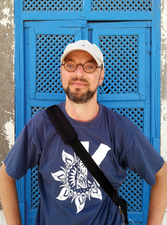Entangle, Rapid Photo Downloader, and GTKRawGallery
Nifty Photo Helpers

Capture, transfer, process, and manage photos using the Entangle, Rapid Photo Downloader, and GTKRawGallery applications.
When it comes to working with photos, digiKam, GIMP, et al. are not the only fish in the sea. Plenty of other applications can prove to be useful additions to your photographic toolbox.
Entangle
Tethering your camera to a computer opens a whole new world of possibilities. You can instantly view captured photos on a large screen, trigger the camera remotely, and do time-lapse photography. Although applications like Rawstudio and Darktable support tethered shooting functionality, Entangle [1] makes a better choice as a dedicated tool for the job.
This application lets you control the camera and its settings via a simple and user-friendly interface. Because Entangle is light on resources, it can run even on modest hardware, so you can, for example, transform an old netbook into a tethered shooting station. Based on gPhoto2, Entangle can handle a wide range of cameras, but it's worth keeping in mind that the application only provides access to features supported by your specific camera model (Figure 1). Although you can use Entangle with a smartphone camera, the application is better suited for use with a decent DSLR camera.
[...]
Buy this article as PDF
(incl. VAT)
Buy Linux Magazine
Subscribe to our Linux Newsletters
Find Linux and Open Source Jobs
Subscribe to our ADMIN Newsletters
Support Our Work
Linux Magazine content is made possible with support from readers like you. Please consider contributing when you’ve found an article to be beneficial.

News
-
Fedora 42 Available with Two New Spins
The latest release from the Fedora Project includes the usual updates, a new kernel, an official KDE Plasma spin, and a new System76 spin.
-
So Long, ArcoLinux
The ArcoLinux distribution is the latest Linux distribution to shut down.
-
What Open Source Pros Look for in a Job Role
Learn what professionals in technical and non-technical roles say is most important when seeking a new position.
-
Asahi Linux Runs into Issues with M4 Support
Due to Apple Silicon changes, the Asahi Linux project is at odds with adding support for the M4 chips.
-
Plasma 6.3.4 Now Available
Although not a major release, Plasma 6.3.4 does fix some bugs and offer a subtle change for the Plasma sidebar.
-
Linux Kernel 6.15 First Release Candidate Now Available
Linux Torvalds has announced that the release candidate for the final release of the Linux 6.15 series is now available.
-
Akamai Will Host kernel.org
The organization dedicated to cloud-based solutions has agreed to host kernel.org to deliver long-term stability for the development team.
-
Linux Kernel 6.14 Released
The latest Linux kernel has arrived with extra Rust support and more.
-
EndeavorOS Mercury Neo Available
A new release from the EndeavorOS team ships with Plasma 6.3 and other goodies.
-
Fedora 42 Beta Has Arrived
The Fedora Project has announced the availability of the first beta release for version 42 of the open-source distribution.

